
List of Nobel laureates in Chemistry
Encyclopedia
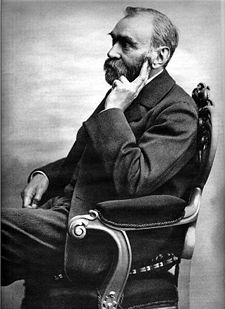
Nobel Prize in Chemistry
The Nobel Prize in Chemistry is awarded annually by the Royal Swedish Academy of Sciences to scientists in the various fields of chemistry. It is one of the five Nobel Prizes established by the will of Alfred Nobel in 1895, awarded for outstanding contributions in chemistry, physics, literature,...
is awarded annually by the Royal Swedish Academy of Sciences
Royal Swedish Academy of Sciences
The Royal Swedish Academy of Sciences or Kungliga Vetenskapsakademien is one of the Royal Academies of Sweden. The Academy is an independent, non-governmental scientific organization which acts to promote the sciences, primarily the natural sciences and mathematics.The Academy was founded on 2...
to scientists in the various fields of chemistry
Chemistry
Chemistry is the science of matter, especially its chemical reactions, but also its composition, structure and properties. Chemistry is concerned with atoms and their interactions with other atoms, and particularly with the properties of chemical bonds....
. It is one of the five Nobel Prize
Nobel Prize
The Nobel Prizes are annual international awards bestowed by Scandinavian committees in recognition of cultural and scientific advances. The will of the Swedish chemist Alfred Nobel, the inventor of dynamite, established the prizes in 1895...
s established by the 1895 will
Will (law)
A will or testament is a legal declaration by which a person, the testator, names one or more persons to manage his/her estate and provides for the transfer of his/her property at death...
of Alfred Nobel
Alfred Nobel
Alfred Bernhard Nobel was a Swedish chemist, engineer, innovator, and armaments manufacturer. He is the inventor of dynamite. Nobel also owned Bofors, which he had redirected from its previous role as primarily an iron and steel producer to a major manufacturer of cannon and other armaments...
, who died in 1896. These prizes are awarded for outstanding contributions in chemistry, physics
Nobel Prize in Physics
The Nobel Prize in Physics is awarded once a year by the Royal Swedish Academy of Sciences. It is one of the five Nobel Prizes established by the will of Alfred Nobel in 1895 and awarded since 1901; the others are the Nobel Prize in Chemistry, Nobel Prize in Literature, Nobel Peace Prize, and...
, literature
Nobel Prize in Literature
Since 1901, the Nobel Prize in Literature has been awarded annually to an author from any country who has, in the words from the will of Alfred Nobel, produced "in the field of literature the most outstanding work in an ideal direction"...
, peace
Nobel Peace Prize
The Nobel Peace Prize is one of the five Nobel Prizes bequeathed by the Swedish industrialist and inventor Alfred Nobel.-Background:According to Nobel's will, the Peace Prize shall be awarded to the person who...
, and physiology or medicine
Nobel Prize in Physiology or Medicine
The Nobel Prize in Physiology or Medicine administered by the Nobel Foundation, is awarded once a year for outstanding discoveries in the field of life science and medicine. It is one of five Nobel Prizes established in 1895 by Swedish chemist Alfred Nobel, the inventor of dynamite, in his will...
. As dictated by Nobel's will, the award is administered by the Nobel Foundation
Nobel Foundation
The Nobel Foundation is a private institution founded on 29 June 1900 to manage the finances and administration of the Nobel Prizes. The Foundation is based on the last will of Alfred Nobel, the inventor of dynamite....
and awarded by a committee that consists of five members elected by the Royal Swedish Academy of Sciences. The first Nobel Prize in Chemistry was awarded in 1901 to Jacobus Henricus van 't Hoff
Jacobus Henricus van 't Hoff
Jacobus Henricus van 't Hoff, Jr. was a Dutch physical and organic chemist and the first winner of the Nobel Prize in chemistry. He is best known for his discoveries in chemical kinetics, chemical equilibrium, osmotic pressure, and stereochemistry...
, of the Netherlands. Each recipient receives a medal, a diploma and a monetary award prize that has varied throughout the years. In 1901, van 't Hoff received 150,782 SEK
Swedish krona
The krona has been the currency of Sweden since 1873. Both the ISO code "SEK" and currency sign "kr" are in common use; the former precedes or follows the value, the latter usually follows it, but especially in the past, it sometimes preceded the value...
, which is equal to 7,731,004 SEK in December 2007. In 2008, the prize was awarded to Osamu Shimomura
Osamu Shimomura
is a Japanese organic chemist and marine biologist, and Professor Emeritus at Marine Biological Laboratory in Woods Hole, Massachusetts and Boston University Medical School...
, Martin Chalfie
Martin Chalfie
Martin Chalfie is an American scientist. He is the William R. Kenan, Jr. Professor of Biological Sciences at Columbia University, where he is also chair of the department of biological sciences. He shared the 2008 Nobel Prize in Chemistry along with Osamu Shimomura and Roger Y. Tsien "for the...
and Roger Y. Tsien
Roger Y. Tsien
Roger Yonchien Tsien is a Chinese American biochemist and a professor at the Department of Chemistry and Biochemistry, University of California, San Diego...
, who shared the prize amount of 10,000,000 SEK (slightly more than €
Euro
The euro is the official currency of the eurozone: 17 of the 27 member states of the European Union. It is also the currency used by the Institutions of the European Union. The eurozone consists of Austria, Belgium, Cyprus, Estonia, Finland, France, Germany, Greece, Ireland, Italy, Luxembourg,...
1 million, or US$1.4 million). The award is presented in Stockholm
Stockholm
Stockholm is the capital and the largest city of Sweden and constitutes the most populated urban area in Scandinavia. Stockholm is the most populous city in Sweden, with a population of 851,155 in the municipality , 1.37 million in the urban area , and around 2.1 million in the metropolitan area...
at an annual ceremony on December 10, the anniversary of Nobel's death.
At least 25 laureates have received the Nobel Prize for contributions in the field of organic chemistry
Organic chemistry
Organic chemistry is a subdiscipline within chemistry involving the scientific study of the structure, properties, composition, reactions, and preparation of carbon-based compounds, hydrocarbons, and their derivatives...
, more than any other field of chemistry. Two winners of the Nobel Prize in Chemistry, Germans Richard Kuhn
Richard Kuhn
Richard Kuhn was an Austrian-German biochemist, Nobel laureate, and Nazi collaborator.-Early life:Kuhn was born in Vienna, Austria where he attended grammar school and high school. His interest in chemistry surfaced early; however he had many interests and decided late to study chemistry...
(1938) and Adolf Butenandt
Adolf Butenandt
Adolf Friedrich Johann Butenandt was a German biochemist and member of the Nazi party. He was awarded the Nobel Prize in Chemistry in 1939 for his "work on sex hormones." He initially rejected the award in accordance with government policy, but accepted it in 1949 after World War...
(1939), were not allowed by their government to accept the prize. They would later receive a medal and diploma, but not the money. Frederick Sanger
Frederick Sanger
Frederick Sanger, OM, CH, CBE, FRS is an English biochemist and a two-time Nobel laureate in chemistry, the only person to have been so. In 1958 he was awarded a Nobel prize in chemistry "for his work on the structure of proteins, especially that of insulin"...
is the only laureate to win the prize twice, in 1958 and 1980. Two others also won Nobel Prizes in other subjects: Marie Curie
Marie Curie
Marie Skłodowska-Curie was a physicist and chemist famous for her pioneering research on radioactivity. She was the first person honored with two Nobel Prizes—in physics and chemistry...
(physics in 1903, chemistry in 1911) and Linus Carl Pauling
Linus Pauling
Linus Carl Pauling was an American chemist, biochemist, peace activist, author, and educator. He was one of the most influential chemists in history and ranks among the most important scientists of the 20th century...
(chemistry in 1954, peace in 1962). Four women have won the prize: Marie Curie, Irène Joliot-Curie
Irène Joliot-Curie
Irène Joliot-Curie was a French scientist, the daughter of Marie Skłodowska-Curie and Pierre Curie and the wife of Frédéric Joliot-Curie. Jointly with her husband, Joliot-Curie was awarded the Nobel Prize for chemistry in 1935 for their discovery of artificial radioactivity. This made the Curies...
(1935), Dorothy Hodgkin (1964), and Ada E. Yonath (2009). As of 2011, the prize has been awarded to 160 individuals. There have been eight years in which the Nobel Prize in Chemistry was not awarded.
Laureates
| Year | Laureate | Country | Rationale | |
|---|---|---|---|---|
| 1901 | 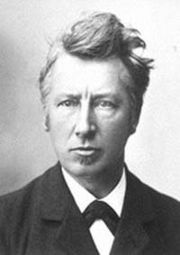 |
Jacobus Henricus van 't Hoff Jacobus Henricus van 't Hoff Jacobus Henricus van 't Hoff, Jr. was a Dutch physical and organic chemist and the first winner of the Nobel Prize in chemistry. He is best known for his discoveries in chemical kinetics, chemical equilibrium, osmotic pressure, and stereochemistry... |
the Netherlands | "[for his] discovery of the laws of chemical dynamics and osmotic pressure Osmotic pressure Osmotic pressure is the pressure which needs to be applied to a solution to prevent the inward flow of water across a semipermeable membrane.... in solutions" |
| 1902 |  |
Hermann Emil Fischer Hermann Emil Fischer Hermann Emil Fischer, Emil Fischer was a German chemist and 1902 recipient of the Nobel Prize in Chemistry. He discovered the Fischer esterification. He developed the Fischer projection, a symbolic way of drawing asymmetric carbon atoms.-Early years:Fischer was born in Euskirchen, near Cologne,... |
Germany | "[for] his work on sugar and purine syntheses" |
| 1903 |  |
Svante August Arrhenius Svante Arrhenius Svante August Arrhenius was a Swedish scientist, originally a physicist, but often referred to as a chemist, and one of the founders of the science of physical chemistry... |
Sweden | "[for] his electrolytic theory of dissociation Dissociation (chemistry) Dissociation in chemistry and biochemistry is a general process in which ionic compounds separate or split into smaller particles, ions, or radicals, usually in a reversible manner... " |
| 1904 |  |
Sir William Ramsay William Ramsay Sir William Ramsay was a Scottish chemist who discovered the noble gases and received the Nobel Prize in Chemistry in 1904 "in recognition of his services in the discovery of the inert gaseous elements in air" .-Early years:Ramsay was born in Glasgow on 2... |
"[for his] discovery of the inert gaseous elements in air, and his determination of their place in the periodic system" | |
| 1905 | .jpg) |
Johann Friedrich Wilhelm Adolf von Baeyer Adolf von Baeyer Johann Friedrich Wilhelm Adolf von Baeyer was a German chemist who synthesized indigo, and was the 1905 recipient of the Nobel Prize in Chemistry. Born in Berlin, he initially studied mathematics and physics at Berlin University before moving to Heidelberg to study chemistry with Robert Bunsen... |
Germany | "[for] the advancement of organic chemistry and the chemical industry, through his work on organic dyes Indigo dye Indigo dye is an organic compound with a distinctive blue color . Historically, indigo was a natural dye extracted from plants, and this process was important economically because blue dyes were once rare. Nearly all indigo dye produced today — several thousand tons each year — is synthetic... and hydroaromatic compounds" |
| 1906 |  |
Henri Moissan Henri Moissan Ferdinand Frederick Henri Moissan was a French chemist who won the 1906 Nobel Prize in Chemistry for his work in isolating fluorine from its compounds.-Biography:... |
France | "[for his] investigation and isolation of the element fluorine Fluorine Fluorine is the chemical element with atomic number 9, represented by the symbol F. It is the lightest element of the halogen column of the periodic table and has a single stable isotope, fluorine-19. At standard pressure and temperature, fluorine is a pale yellow gas composed of diatomic... , and for [the] electric furnace Electric arc furnace An electric arc furnace is a furnace that heats charged material by means of an electric arc.Arc furnaces range in size from small units of approximately one ton capacity up to about 400 ton units used for secondary steelmaking... called after him" |
| 1907 |  |
Eduard Buchner Eduard Buchner Eduard Buchner was a German chemist and zymologist, awarded with the 1907 Nobel Prize in Chemistry thanks to his work on fermentation.-Early years:... |
Germany | "for his biochemical researches and his discovery of cell-free fermentation Zymase Zymase is an enzyme complex that catalyzes the fermentation of sugar into ethanol and carbon dioxide. They occur naturally in yeasts... " |
| 1908 |  |
Ernest Rutherford Ernest Rutherford Ernest Rutherford, 1st Baron Rutherford of Nelson OM, FRS was a New Zealand-born British chemist and physicist who became known as the father of nuclear physics... |
United Kingdom New Zealand |
"for his investigations into the disintegration of the elements, and the chemistry of radioactive substances" |
| 1909 | 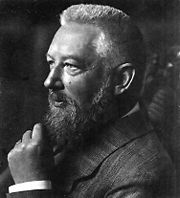 |
Wilhelm Ostwald Wilhelm Ostwald Friedrich Wilhelm Ostwald was a Baltic German chemist. He received the Nobel Prize in Chemistry in 1909 for his work on catalysis, chemical equilibria and reaction velocities... |
Germany | "[for] his work on catalysis and for his investigations into the fundamental principles governing chemical equilibria and rates of reaction" |
| 1910 |  |
Otto Wallach Otto Wallach Otto Wallach was a German chemist and recipient of the 1910 Nobel prize in Chemistry for his work on alicyclic compounds.-Biography:... |
Germany | "[for] his services to organic chemistry and the chemical industry by his pioneer work in the field of alicyclic compound Alicyclic compound An alicyclic compound is an organic compound that is both aliphatic and cyclic. They contain one or more all-carbon rings which may be either saturated or unsaturated, but do not have aromatic character... s" |
| 1911 | 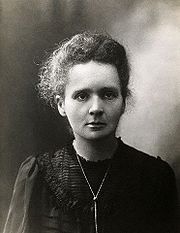 |
Marie Curie, née Sklodowska Marie Curie Marie Skłodowska-Curie was a physicist and chemist famous for her pioneering research on radioactivity. She was the first person honored with two Nobel Prizes—in physics and chemistry... |
Poland/France | "[for] the discovery of the elements radium and polonium, by the isolation of radium and the study of the nature and compounds of this remarkable element" |
| 1912 | 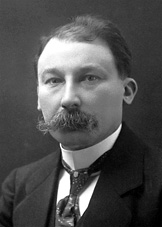 |
Victor Grignard Victor Grignard François Auguste Victor Grignard was a Nobel Prize-winning French chemist.Grignard was the son of a sail maker. After studying mathematics at Lyon he transferred to chemistry and discovered the synthetic reaction bearing his name in 1900... |
France | "for the discovery of the [...] Grignard reagent" |
 |
Paul Sabatier Paul Sabatier (chemist) Paul Sabatier FRS was a French chemist, born at Carcassonne. He taught science classes most of his life before he became Dean of the Faculty of Science at the University of Toulouse in 1905.... |
France | "for his method of hydrogenating organic compounds in the presence of finely disintegrated metals" | |
| 1913 | 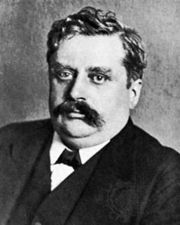 |
Alfred Werner Alfred Werner Alfred Werner was a Swiss chemist who was a student at ETH Zurich and a professor at the University of Zurich. He won the Nobel Prize in Chemistry in 1913 for proposing the octahedral configuration of transition metal complexes. Werner developed the basis for modern coordination chemistry... |
Switzerland | "[for] his work on the linkage of atoms in molecule Octahedral molecular geometry In chemistry, octahedral molecular geometry describes the shape of compounds where in six atoms or groups of atoms or ligands are symmetrically arranged around a central atom, defining the vertices of an octahedron... s [...] especially in inorganic chemistry" |
| 1914 | 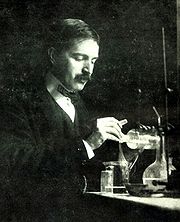 |
Theodore William Richards Theodore William Richards Theodore William Richards was the first American scientist to receive the Nobel Prize in Chemistry, earning the award "in recognition of his exact determinations of the atomic weights of a large number of the chemical elements."- Biography :Theodore Richards was born in Germantown, Philadelphia,... |
United States | "[for] his accurate determinations of the atomic weight of a large number of chemical elements" |
| 1915 | 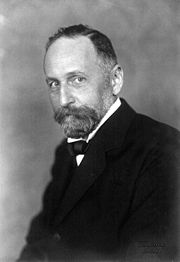 |
Richard Martin Willstätter Richard Willstätter Richard Martin Willstätter was a German organic chemist whose study of the structure of plant pigments, chlorophyll included, won him the 1915 Nobel Prize for Chemistry. Willstätter invented paper chromatography independently of Mikhail Tsvet.-Biography:Willstätter was born in to a Jewish family... |
Germany | "for his researches on plant pigments, especially chlorophyll Chlorophyll Chlorophyll is a green pigment found in almost all plants, algae, and cyanobacteria. Its name is derived from the Greek words χλωρος, chloros and φύλλον, phyllon . Chlorophyll is an extremely important biomolecule, critical in photosynthesis, which allows plants to obtain energy from light... " |
| 1916 | Not awarded | |||
| 1917 | ||||
| 1918 |  |
Fritz Haber Fritz Haber Fritz Haber was a German chemist, who received the Nobel Prize in Chemistry in 1918 for his development for synthesizing ammonia, important for fertilizers and explosives. Haber, along with Max Born, proposed the Born–Haber cycle as a method for evaluating the lattice energy of an ionic solid... |
Germany | "for the synthesis of ammonia Haber process The Haber process, also called the Haber–Bosch process, is the nitrogen fixation reaction of nitrogen gas and hydrogen gas, over an enriched iron or ruthenium catalyst, which is used to industrially produce ammonia.... from its elements" |
| 1919 | Not awarded | |||
| 1920 | 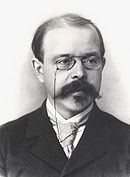 |
Walther Hermann Nernst Walther Nernst Walther Hermann Nernst FRS was a German physical chemist and physicist who is known for his theories behind the calculation of chemical affinity as embodied in the third law of thermodynamics, for which he won the 1920 Nobel Prize in chemistry... |
Germany | "[for] his work in thermochemistry" |
| 1921 | .png) |
Frederick Soddy Frederick Soddy Frederick Soddy was an English radiochemist who explained, with Ernest Rutherford, that radioactivity is due to the transmutation of elements, now known to involve nuclear reactions. He also proved the existence of isotopes of certain radioactive elements... |
United Kingdom | "for his contributions to our knowledge of the chemistry of radioactive substances, and his investigations into the origin and nature of isotopes" |
| 1922 | Francis William Aston Francis William Aston Francis William Aston was a British chemist and physicist who won the 1922 Nobel Prize in Chemistry for his discovery, by means of his mass spectrograph, of isotopes, in a large number of non-radioactive elements, and for his enunciation of the whole-number rule... |
United Kingdom | "for his discovery, by means of his mass spectrograph, of isotopes Stable isotope Stable isotopes are chemical isotopes that may or may not be radioactive, but if radioactive, have half-lives too long to be measured.Only 90 nuclides from the first 40 elements are energetically stable to any kind of decay save proton decay, in theory... , in a large number of non-radioactive elements, and for his enunciation of the whole-number rule Whole number rule The whole number rule states that the masses of the elements are whole number multiples of the mass of the hydrogen atom. The rule can be formulated from Prout's hypothesis put forth in 1815. In 1920, Francis W... " |
|
| 1923 |  |
Fritz Pregl Fritz Pregl Fritz Pregl , was an Austrian chemist and physician from a mixed Slovene-German-speaking background... |
Austria | "for his invention of the method of micro-analysis Microanalysis Microanalysis is the chemical identification and quantitative analysis of very small amounts of chemical substances or very small surfaces of material... of organic substances" |
| 1924 | Not awarded | |||
| 1925 | Richard Adolf Zsigmondy Richard Adolf Zsigmondy Richard Adolf Zsigmondy was an Austrian-Hungarian chemist and Nobel laureate for chemistry known for his research in colloids. The crater Zsigmondy on the Moon is named in his honour.... |
Germany / Hungary | "for his demonstration of the heterogeneous nature of colloid Colloid A colloid is a substance microscopically dispersed evenly throughout another substance.A colloidal system consists of two separate phases: a dispersed phase and a continuous phase . A colloidal system may be solid, liquid, or gaseous.Many familiar substances are colloids, as shown in the chart below... solutions and for the methods he used" |
|
| 1926 | The (Theodor) Svedberg Theodor Svedberg Theodor H. E. Svedberg was a Swedish chemist and Nobel laureate, active at Uppsala University. His work with colloids supported the theories of Brownian motion put forward by Einstein and the Polish geophysicist Marian Smoluchowski... |
Sweden | "for his work on disperse systems Ultracentrifuge The ultracentrifuge is a centrifuge optimized for spinning a rotor at very high speeds, capable of generating acceleration as high as 2,000,000 g . There are two kinds of ultracentrifuges, the preparative and the analytical ultracentrifuge... " |
|
| 1927 | Heinrich Otto Wieland Heinrich Otto Wieland Heinrich Otto Wieland was a German chemist. He won the 1927 Nobel Prize in Chemistry for his research into the bile acids. In 1901 Wieland received his doctorate at the University of Munich while studying under Johannes Thiele... |
Germany | "for his investigations of the constitution of the bile acid Bile acid Bile acids are steroid acids found predominantly in the bile of mammals. Bile salts are bile acids compounded with a cation, usually sodium. In humans, the salts of taurocholic acid and glycocholic acid represent approximately eighty percent of all bile salts. The two major bile acids are cholic... s and related substances" |
|
| 1928 | 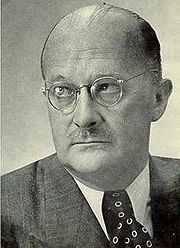 |
Adolf Otto Reinhold Windaus Adolf Otto Reinhold Windaus Adolf Otto Reinhold Windaus was a German chemist who won a Nobel Prize in Chemistry in 1928 for his work on sterols and their relation to vitamins. He was the doctoral advisor of Adolf Butenandt who also won a Nobel Prize in Chemistry in 1939.Adolf Windaus was born in Berlin. His interest in... |
Germany | "[for] his research into the constitution of the sterol Sterol Sterols, also known as steroid alcohols, are a subgroup of the steroids and an important class of organic molecules. They occur naturally in plants, animals, and fungi, with the most familiar type of animal sterol being cholesterol... s and their connection with the vitamin Vitamin A vitamin is an organic compound required as a nutrient in tiny amounts by an organism. In other words, an organic chemical compound is called a vitamin when it cannot be synthesized in sufficient quantities by an organism, and must be obtained from the diet. Thus, the term is conditional both on... s" |
| 1929 | Arthur Harden Arthur Harden Sir Arthur Harden FRS was an English biochemist. He shared the Nobel Prize in Chemistry in 1929 with Hans Karl August Simon von Euler-Chelpin for their investigations into the fermentation of sugar and fermentative enzymes.... |
United Kingdom | "for their investigations on the fermentation of sugar and fermentative enzyme Zymase Zymase is an enzyme complex that catalyzes the fermentation of sugar into ethanol and carbon dioxide. They occur naturally in yeasts... s" |
|
| Hans Karl August Simon von Euler-Chelpin Hans von Euler-Chelpin Hans Karl August Simon von Euler-Chelpin was a German-born Swedish biochemist. He won the Nobel Prize in Chemistry in 1929 with Arthur Harden for their investigations on the fermentation of sugar and fermentative enzymes.He was professor of general and organic chemistry at Stockholm University... |
Germany | |||
| 1930 | Hans Fischer Hans Fischer Hans Fischer was a German organic chemist and the recipient of the 1930 Nobel Prize for Chemistry.-Early years:... |
Germany | "for his researches into the constitution of haemin and chlorophyll Chlorophyll Chlorophyll is a green pigment found in almost all plants, algae, and cyanobacteria. Its name is derived from the Greek words χλωρος, chloros and φύλλον, phyllon . Chlorophyll is an extremely important biomolecule, critical in photosynthesis, which allows plants to obtain energy from light... and especially for his synthesis of haemin" |
|
| 1931 | Carl Bosch Carl Bosch Carl Bosch was a German chemist and engineer and Nobel laureate in chemistry. He was a pioneer in the field of high-pressure industrial chemistry and founder of IG Farben, at one point the world's largest chemical company.... |
Germany | "[for] their contributions to the invention and development of chemical high pressure methods Bergius process and Haber-Bosch process The Bergius process and the Haber-Bosch process were two pioneering methods of high pressure chemistry.*Bergius process*Haber–Bosch process... " |
|
| Friedrich Bergius Friedrich Bergius Friedrich Karl Rudolf Bergius was a German chemist known for the Bergius process for producing synthetic fuel from coal, Nobel Prize in Chemistry in recognition of contributions to the invention and development of chemical high-pressure methods... |
Germany | |||
| 1932 | 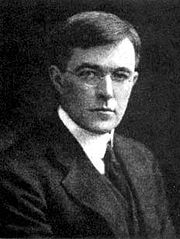 |
Irving Langmuir Irving Langmuir Irving Langmuir was an American chemist and physicist. His most noted publication was the famous 1919 article "The Arrangement of Electrons in Atoms and Molecules" in which, building on Gilbert N. Lewis's cubical atom theory and Walther Kossel's chemical bonding theory, he outlined his... |
United States | "for his discoveries and investigations in surface chemistry" |
| 1933 | Not awarded | |||
| 1934 |  |
Harold Clayton Urey Harold Urey Harold Clayton Urey was an American physical chemist whose pioneering work on isotopes earned him the Nobel Prize in Chemistry in 1934... |
United States | "for his discovery of heavy hydrogen Deuterium Deuterium, also called heavy hydrogen, is one of two stable isotopes of hydrogen. It has a natural abundance in Earth's oceans of about one atom in of hydrogen . Deuterium accounts for approximately 0.0156% of all naturally occurring hydrogen in Earth's oceans, while the most common isotope ... " |
| 1935 | Frédéric Joliot Frédéric Joliot-Curie Jean Frédéric Joliot-Curie , born Jean Frédéric Joliot, was a French physicist and Nobel laureate.-Early years:... |
France | "[for] their synthesis of new radioactive elements" | |
| Irène Joliot-Curie Irène Joliot-Curie Irène Joliot-Curie was a French scientist, the daughter of Marie Skłodowska-Curie and Pierre Curie and the wife of Frédéric Joliot-Curie. Jointly with her husband, Joliot-Curie was awarded the Nobel Prize for chemistry in 1935 for their discovery of artificial radioactivity. This made the Curies... |
France | |||
| 1936 | 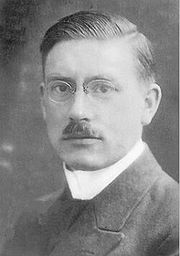 |
Petrus (Peter) Josephus Wilhelmus Debye Peter Debye Peter Joseph William Debye FRS was a Dutch physicist and physical chemist, and Nobel laureate in Chemistry.-Early life:... |
the Netherlands | "[for his work on] molecular structure through his investigations on dipole moments and the diffraction of X-rays and electrons in gases Debye-Waller factor The Debye–Waller factor , named after Peter Debye and Ivar Waller, is used in condensed matter physics to describe the attenuation of x-ray scattering or coherent neutron scattering caused by thermal motion. It has also been called the B factor or the temperature factor... " |
| 1937 | 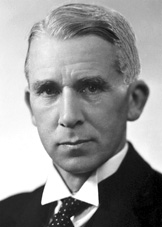 |
Walter Norman Haworth Walter Haworth Sir Norman Haworth was a British chemist best known for his groundbreaking work on ascorbic acid while working at the University of Birmingham. He received the 1937 Nobel Prize in Chemistry "for his investigations on carbohydrates and vitamin C"... |
United Kingdom | "for his investigations on carbohydrates and vitamin C" |
| Paul Karrer Paul Karrer Paul Karrer was a Swiss organic chemist best known for his research on vitamins. He and Walter Haworth won the Nobel Prize for Chemistry in 1937.-Early years:... |
Switzerland | "for his investigations on carotenoid Carotenoid Carotenoids are tetraterpenoid organic pigments that are naturally occurring in the chloroplasts and chromoplasts of plants and some other photosynthetic organisms like algae, some bacteria, and some types of fungus. Carotenoids can be synthesized fats and other basic organic metabolic building... s, flavins and vitamins A Vitamin A Vitamin A is a vitamin that is needed by the retina of the eye in the form of a specific metabolite, the light-absorbing molecule retinal, that is necessary for both low-light and color vision... and B2 Riboflavin Riboflavin, also known as vitamin B2 or additive E101, is an easily absorbed micronutrient with a key role in maintaining health in humans and animals. It is the central component of the cofactors FAD and FMN, and is therefore required by all flavoproteins. As such, vitamin B2 is required for a... " |
||
| 1938 | Richard Kuhn Richard Kuhn Richard Kuhn was an Austrian-German biochemist, Nobel laureate, and Nazi collaborator.-Early life:Kuhn was born in Vienna, Austria where he attended grammar school and high school. His interest in chemistry surfaced early; however he had many interests and decided late to study chemistry... |
Germany | "for his work on carotenoid Carotenoid Carotenoids are tetraterpenoid organic pigments that are naturally occurring in the chloroplasts and chromoplasts of plants and some other photosynthetic organisms like algae, some bacteria, and some types of fungus. Carotenoids can be synthesized fats and other basic organic metabolic building... s and vitamin Vitamin A vitamin is an organic compound required as a nutrient in tiny amounts by an organism. In other words, an organic chemical compound is called a vitamin when it cannot be synthesized in sufficient quantities by an organism, and must be obtained from the diet. Thus, the term is conditional both on... s" |
|
| 1939 | Adolf Friedrich Johann Butenandt Adolf Butenandt Adolf Friedrich Johann Butenandt was a German biochemist and member of the Nazi party. He was awarded the Nobel Prize in Chemistry in 1939 for his "work on sex hormones." He initially rejected the award in accordance with government policy, but accepted it in 1949 after World War... |
Germany | "for his work on sex hormones" | |
| Leopold Ruzicka | Croatia | "for his work on polymethylenes and higher terpene Terpene Terpenes are a large and diverse class of organic compounds, produced by a variety of plants, particularly conifers, though also by some insects such as termites or swallowtail butterflies, which emit terpenes from their osmeterium. They are often strong smelling and thus may have had a protective... s" |
||
| 1940 | Not awarded | |||
| 1941 | ||||
| 1942 | ||||
| 1943 | 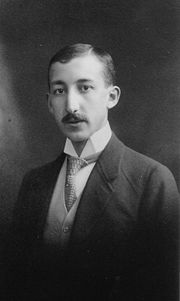 |
George de Hevesy George de Hevesy George Charles de Hevesy, Georg Karl von Hevesy, was a Hungarian radiochemist and Nobel laureate, recognized in 1943 for his key role in the development of radioactive tracers to study chemical processes such as in the metabolism of animals.- Early years :Hevesy György was born in Budapest,... |
Hungary | "for his work on the use of isotopes as tracers Radioactive tracer A radioactive tracer, also called a radioactive label, is a substance containing a radioisotope that is used to measure the speed of chemical processes and to track the movement of a substance through a natural system such as a cell or tissue... in the study of chemical processes" |
| 1944 | Otto Hahn Otto Hahn Otto Hahn FRS was a German chemist and Nobel laureate, a pioneer in the fields of radioactivity and radiochemistry. He is regarded as "the father of nuclear chemistry". Hahn was a courageous opposer of Jewish persecution by the Nazis and after World War II he became a passionate campaigner... |
Germany | "for his discovery of the fission Nuclear fission In nuclear physics and nuclear chemistry, nuclear fission is a nuclear reaction in which the nucleus of an atom splits into smaller parts , often producing free neutrons and photons , and releasing a tremendous amount of energy... of heavy nuclei" |
|
| 1945 | Artturi Ilmari Virtanen Artturi Ilmari Virtanen Artturi Ilmari Virtanen was a Finnish chemist and recipient of the 1945 Nobel Prize in Chemistry.-Early life:Virtanen was born in Helsinki, Finland. He completed his school education at the Classical Lyceum in Viipuri, Finland. He married the botanist Lilja Moisio in 1920 and had two sons with her... |
Finland | "for his research and inventions in agricultural and nutrition chemistry, especially for his fodder preservation method AIV fodder AIV Fodder is a kind of silage. The AIV liquid is added to the green fodder to improve the storage. This is especially important during long winters. The process includes adding a dilute hydrochloric or sulfuric acid to newly stored grain... " |
|
| 1946 | James Batcheller Sumner James B. Sumner James Batcheller Sumner was an American chemist. He shared the Nobel Prize in Chemistry in 1946 with John Howard Northrop and Wendell Meredith Stanley.-Biography:... |
United States | "for his discovery that enzymes can be crystallized" | |
| John Howard Northrop John Howard Northrop John Howard Northrop was an American biochemist who won, with James Batcheller Sumner and Wendell Meredith Stanley, the 1946 Nobel Prize in Chemistry. The award was given for these scientists' isolation, crystallization, and study of enzymes, proteins, and viruses... |
United States | "for their preparation of enzymes and virus proteins in a pure form" | ||
| Wendell Meredith Stanley Wendell Meredith Stanley Wendell Meredith Stanley was an American biochemist, virologist and Nobel laureate.-Biography:Stanley was born in Ridgeville, Indiana, and earned a BS in Chemistry at Earlham College in Richmond, Indiana. He then studied at the University of Illinois, gaining an MS in science in 1927 followed by... |
United States | |||
| 1947 | Sir Robert Robinson | United Kingdom | "for his investigations on plant products of biological importance Tropinone Tropinone is an alkaloid, famously synthesised in 1917 by Robert Robinson as a synthetic precursor to atropine, a scarce commodity during World War I. Tropinone and the alkaloids cocaine and atropine all share the same tropane core structure.-Synthesis:... , especially the alkaloids" |
|
| 1948 | 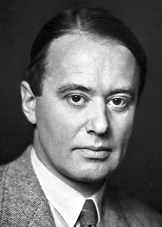 |
Arne Wilhelm Kaurin Tiselius Arne Tiselius Arne Wilhelm Kaurin Tiselius was a Swedish biochemist who won the Nobel Prize in Chemistry in 1948.- Biography:Tiselius was born in Stockholm... |
Sweden | "for his research on electrophoresis Electrophoresis Electrophoresis, also called cataphoresis, is the motion of dispersed particles relative to a fluid under the influence of a spatially uniform electric field. This electrokinetic phenomenon was observed for the first time in 1807 by Reuss , who noticed that the application of a constant electric... and adsorption analysis, especially for his discoveries concerning the complex nature of the serum proteins Globulin Globulin is one of the three types of serum proteins, the others being albumin and fibrinogen. Some globulins are produced in the liver, while others are made by the immune system. The term globulin encompasses a heterogeneous group of proteins with typical high molecular weight, and both... " |
| 1949 | William Francis Giauque William Giauque William Francis Giauque was an American chemist and Nobel laureate recognised in 1949 for his studies in the properties of matter at temperatures close to absolute zero... |
United States | "for his contributions in the field of chemical thermodynamics Magnetic refrigeration Magnetic refrigeration is a cooling technology based on the magnetocaloric effect. This technique can be used to attain extremely low temperatures , as well as the ranges used in common refrigerators, depending on the design of the system.The effect was first observed by the German physicist Emil... , particularly concerning the behaviour of substances at extremely low temperatures" |
|
| 1950 | Otto Paul Hermann Diels Otto Diels Otto Paul Hermann Diels was a German chemist. He was the son of a professor of philology at the University of Berlin, where he himself earned his doctorate in chemistry, in the group of Emil Fischer.... |
Federal Republic of Germany West Germany West Germany is the common English, but not official, name for the Federal Republic of Germany or FRG in the period between its creation in May 1949 to German reunification on 3 October 1990.... |
"for their discovery and development of the diene synthesis Diels-Alder reaction The Diels–Alder reaction is an organic chemical reaction between a conjugated diene and a substituted alkene, commonly termed the dienophile, to form a substituted cyclohexene system. The reaction can proceed even if some of the atoms in the newly formed ring are not carbon... " |
|
| Kurt Alder Kurt Alder Kurt Alder was a German chemist and Nobel laureate.-Biography:Alder was born in the industrial area of Königshütte, Silesia , where he received his early schooling... |
Federal Republic of Germany | |||
| 1951 | Edwin Mattison McMillan Edwin McMillan Edwin Mattison McMillan was an American physicist and Nobel laureate credited with being the first ever to produce a transuranium element. He shared the Nobel Prize in Chemistry with Glenn Seaborg in 1951.... |
United States | "for their discoveries in the chemistry of transuranium elements" | |
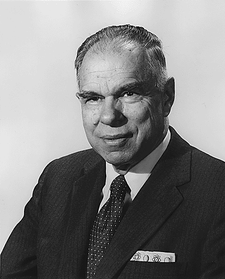 |
Glenn Theodore Seaborg Glenn T. Seaborg Glenn Theodore Seaborg was an American scientist who won the 1951 Nobel Prize in Chemistry for "discoveries in the chemistry of the transuranium elements", contributed to the discovery and isolation of ten elements, and developed the actinide concept, which led to the current arrangement of the... |
United States | ||
| 1952 | Archer John Porter Martin Archer John Porter Martin Archer John Porter Martin, FRS was a British chemist who shared the 1952 Nobel Prize in Chemistry for the invention of partition chromatography with Richard Synge.... |
United Kingdom | "for their invention of partition chromatography" | |
| Richard Laurence Millington Synge | United Kingdom | |||
| 1953 | Hermann Staudinger Hermann Staudinger - External links :* Staudinger's * Staudinger's Nobel Lecture *.... |
Federal Republic of Germany | "for his discoveries in the field of macromolecular chemistry" | |
| 1954 | 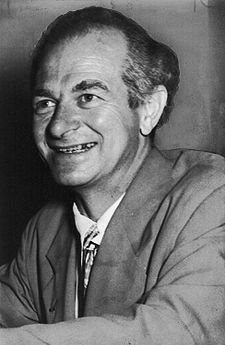 |
Linus Carl Pauling Linus Pauling Linus Carl Pauling was an American chemist, biochemist, peace activist, author, and educator. He was one of the most influential chemists in history and ranks among the most important scientists of the 20th century... |
United States | "for his research into the nature of the chemical bond and its application to the elucidation of the structure of complex substances" |
| 1955 | Vincent du Vigneaud Vincent du Vigneaud Vincent du Vigneaud was an American biochemist. He won a Nobel Prize in Chemistry in 1955 for the isolation, structural identification, and total synthesis of the cyclic peptide, oxytocin.-Biography:... |
United States | "for his work on biochemically important sulphur compounds, especially for the first synthesis of a polypeptide hormone" | |
| 1956 | Sir Cyril Norman Hinshelwood Cyril Norman Hinshelwood Sir Cyril Norman Hinshelwood OM PRS was an English physical chemist.Born in London, his parents were Norman Macmillan Hinshelwood, a chartered accountant, and Ethe Frances née Smith. He was educated first in Canada, returning in 1905 on the death of his father to a small flat in Chelsea where he... |
United Kingdom | "for their researches into the mechanism of chemical reaction Reaction mechanism In chemistry, a reaction mechanism is the step by step sequence of elementary reactions by which overall chemical change occurs.Although only the net chemical change is directly observable for most chemical reactions, experiments can often be designed that suggest the possible sequence of steps in... s" |
|
| Nikolay Nikolaevich Semenov Nikolay Semyonov Nikolay Nikolayevich Semyonov was a Russian/Soviet physicist and chemist. Semyonov was awarded the 1956 Nobel Prize in Chemistry for his work on the mechanism of chemical transformation.-Life:... |
USSR Soviet Union The Soviet Union , officially the Union of Soviet Socialist Republics , was a constitutionally socialist state that existed in Eurasia between 1922 and 1991.... |
|||
| 1957 | Lord (Alexander R.) Todd Alexander R. Todd, Baron Todd Alexander Robertus Todd, Baron Todd, OM, PRS FRSE was a Scottish biochemist whose research on the structure and synthesis of nucleotides, nucleosides, and nucleotide coenzymes gained him the 1957 Nobel Prize for Chemistry.Todd was born near Glasgow, attended Allan Glen's School and graduated from... |
United Kingdom | "for his work on nucleotide Nucleotide Nucleotides are molecules that, when joined together, make up the structural units of RNA and DNA. In addition, nucleotides participate in cellular signaling , and are incorporated into important cofactors of enzymatic reactions... s and nucleotide co-enzymes" |
|
| 1958 |  |
Frederick Sanger Frederick Sanger Frederick Sanger, OM, CH, CBE, FRS is an English biochemist and a two-time Nobel laureate in chemistry, the only person to have been so. In 1958 he was awarded a Nobel prize in chemistry "for his work on the structure of proteins, especially that of insulin"... |
United Kingdom | "for his work on the structure of proteins, especially that of insulin" |
| 1959 | Jaroslav Heyrovský Jaroslav Heyrovský Jaroslav Heyrovský was a Czech chemist and inventor. Heyrovský was the inventor of the polarographic method, father of the electroanalytical method, and recipient of the Nobel Prize in 1959... |
Czechoslovakia Czechoslovakia Czechoslovakia or Czecho-Slovakia was a sovereign state in Central Europe which existed from October 1918, when it declared its independence from the Austro-Hungarian Empire, until 1992... |
"for his discovery and development of the polarographic Polarography Polarography is a subclass of voltammetry where the working electrode is a dropping mercury electrode or a static mercury drop electrode ., useful for its wide cathodic range and renewable surface... methods of analysis" |
|
| 1960 | Willard Frank Libby Willard Libby Willard Frank Libby was an American physical chemist noted for his role in the 1949 development of radiocarbon dating, a process which revolutionized archaeology.... |
United States | "for his method to use carbon-14 for age determination in archaeology, geology, geophysics, and other branches of science" | |
| 1961 |  |
Melvin Calvin Melvin Calvin Melvin Ellis Calvin was an American chemist most famed for discovering the Calvin cycle along with Andrew Benson and James Bassham, for which he was awarded the 1961 Nobel Prize in Chemistry. He spent most of his five-decade career at the University of California, Berkeley.- Life :Calvin was born... |
United States | "for his research on the carbon dioxide assimilation in plants Calvin cycle The Calvin cycle or Calvin–Benson-Bassham cycle or reductive pentose phosphate cycle or C3 cycle or CBB cycle is a series of biochemical redox reactions that take place in the stroma of chloroplasts in photosynthetic organisms... " |
| 1962 | Max Ferdinand Perutz Max Perutz Max Ferdinand Perutz, OM, CH, CBE, FRS was an Austrian-born British molecular biologist, who shared the 1962 Nobel Prize for Chemistry with John Kendrew, for their studies of the structures of hemoglobin and globular proteins... |
United Kingdom | "for their studies of the structures of globular proteins Myoglobin Myoglobin is an iron- and oxygen-binding protein found in the muscle tissue of vertebrates in general and in almost all mammals. It is related to hemoglobin, which is the iron- and oxygen-binding protein in blood, specifically in the red blood cells. The only time myoglobin is found in the... " |
|
 |
John Cowdery Kendrew John Kendrew Sir John Cowdery Kendrew, CBE, FRS was an English biochemist and crystallographer who shared the 1962 Nobel Prize in Chemistry with Max Perutz; their group in the Cavendish Laboratory investigated the structure of heme-containing proteins.-Biography:He was born in Oxford, son of Wilford George... |
United Kingdom | ||
| 1963 | Karl Ziegler Karl Ziegler Karl Waldemar Ziegler was a German chemist who won the Nobel Prize in Chemistry in 1963, with Giulio Natta, for work on polymers. The Nobel Committee recognized his "excellent work on organometallic compounds [which]...led to new polymerization reactions and ... paved the way for new and highly... |
Federal Republic of Germany | "for their discoveries Ziegler-Natta catalyst A Ziegler–Natta catalyst is a catalyst used in the synthesis of polymers of 1-alkenes . Three types of Ziegler–Natta catalysts are currently employed:* Solid and supported catalysts based on titanium compounds... in the field of the chemistry and technology of high polymers" |
|
| Giulio Natta Giulio Natta Giulio Natta was an Italian chemist and Nobel laureate. He won a Nobel Prize in Chemistry in 1963 with Karl Ziegler for work on high polymers.-Early years:... |
Italy | |||
| 1964 | Dorothy Crowfoot Hodgkin | United Kingdom | "for her determinations by X-ray techniques of the structures of important biochemical substances" | |
| 1965 | Robert Burns Woodward Robert Burns Woodward Robert Burns Woodward was an American organic chemist, considered by many to be the preeminent organic chemist of the twentieth century... |
United States | "for his outstanding achievements in the art of organic synthesis" | |
| 1966 | Robert S. Mulliken Robert S. Mulliken Robert Sanderson Mulliken was an American physicist and chemist, primarily responsible for the early development of molecular orbital theory, i.e. the elaboration of the molecular orbital method of computing the structure of molecules. Dr. Mulliken received the Nobel Prize for chemistry in 1966... |
United States | "for his fundamental work concerning chemical bonds and the electronic structure of molecules by the molecular orbital method Molecular orbital theory In chemistry, molecular orbital theory is a method for determining molecular structure in which electrons are not assigned to individual bonds between atoms, but are treated as moving under the influence of the nuclei in the whole molecule... " |
|
| 1967 | Manfred Eigen Manfred Eigen Manfred Eigen is a German biophysical chemist who won the 1967 Nobel Prize in Chemistry for work on measuring fast chemical reactions.-Career:... |
Federal Republic of Germany | "for their studies of extremely fast chemical reactions Flash photolysis Flash photolysis is a pump-probe laboratory technique, in which a sample is firstly excited by a strong pulse of light from a laser of nanosecond, picosecond, or femtosecond pulse width or by a short-pulse light source such as a flash lamp... , effected by disturbing the equilibrium by means of very short pulses of energy" |
|
| Ronald George Wreyford Norrish Ronald George Wreyford Norrish Ronald George Wreyford Norrish was a British chemist. He was born in Cambridge and attended The Perse School. He was a former student of Eric Rideal... |
United Kingdom | |||
| George Porter George Porter George Hornidge Porter, Baron Porter of Luddenham, OM, FRS was a British chemist.- Life :Porter was born in Stainforth, near Thorne, South Yorkshire. He was educated at Thorne Grammar School, then won a scholarship to the University of Leeds and gained his first degree in chemistry... |
United Kingdom | |||
| 1968 | Lars Onsager Lars Onsager Lars Onsager was a Norwegian-born American physical chemist and theoretical physicist, winner of the 1968 Nobel Prize in Chemistry.He held the Gibbs Professorship of Theoretical Chemistry at Yale University.... |
United States | "for the discovery of the reciprocal relations Onsager reciprocal relations In thermodynamics, the Onsager reciprocal relations express the equality of certain ratios between flows and forces in thermodynamic systems out of equilibrium, but where a notion of local equilibrium exists.... bearing his name, which are fundamental for the thermodynamics of irreversible processes" |
|
| 1969 | Derek H. R. Barton | United Kingdom | "for their contributions to the development of the concept of conformation Conformational isomerism In chemistry, conformational isomerism is a form of stereoisomerism in which the isomers can be interconverted exclusively by rotations about formally single bonds... and its application in chemistry" |
|
| Odd Hassel Odd Hassel Odd Hassel was a Norwegian physical chemist and Nobel Laureate.-Biography:Born in Kristiania, his parents were Ernst Hassel, a gynaecologist, and Mathilde Klaveness. In 1915, he entered the University of Oslo where he studied mathematics, physics and chemistry, and graduated in 1920... |
Norway | |||
| 1970 | 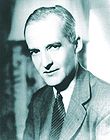 |
Luis F. Leloir Luis Federico Leloir Luis Federico Leloir was an Argentine doctor and biochemist who received the 1970 Nobel Prize in Chemistry. He was the first Spanish-speaking scientist to ever receive the award... |
Argentina Argentina Argentina , officially the Argentine Republic , is the second largest country in South America by land area, after Brazil. It is constituted as a federation of 23 provinces and an autonomous city, Buenos Aires... |
"for his discovery of sugar nucleotides and their role in the biosynthesis of carbohydrates" |
| 1971 | Gerhard Herzberg Gerhard Herzberg Gerhard Heinrich Friedrich Otto Julius Herzberg, was a pioneering physicist and physical chemist, who won the Nobel Prize for Chemistry in 1971, "for his contributions to the knowledge of electronic structure and geometry of molecules, particularly free radicals". Herzberg's main work concerned... |
Canada | "for his contributions to the knowledge of electronic structure and geometry of molecules, particularly free radicals Radical (chemistry) Radicals are atoms, molecules, or ions with unpaired electrons on an open shell configuration. Free radicals may have positive, negative, or zero charge... " |
|
| 1972 |  |
Christian B. Anfinsen Christian B. Anfinsen Christian Boehmer Anfinsen, Jr. was an American biochemist. He shared the 1972 Nobel Prize in Chemistry with Stanford Moore and William Howard Stein for work on ribonuclease, especially concerning the connection between the amino acid sequence and the biologically active conformation... |
United States | "for his work on ribonuclease Ribonuclease Ribonuclease is a type of nuclease that catalyzes the degradation of RNA into smaller components. Ribonucleases can be divided into endoribonucleases and exoribonucleases, and comprise several sub-classes within the EC 2.7 and 3.1 classes of enzymes.-Function:All organisms studied contain... , especially concerning the connection between the amino acid sequence and the biologically active conformation" |
| Stanford Moore Stanford Moore Stanford Moore was a U.S. biochemist. He shared a Nobel Prize in Chemistry in 1972 Stanford Moore (September 4, 1913 – August 23, 1982) was a U.S. biochemist. He shared a Nobel Prize in Chemistry in 1972 Stanford Moore (September 4, 1913 – August 23, 1982) was a U.S. biochemist. He... |
United States | "for their contribution to the understanding of the connection between chemical structure and catalytic activity of the active centre of the ribonuclease Ribonuclease Ribonuclease is a type of nuclease that catalyzes the degradation of RNA into smaller components. Ribonucleases can be divided into endoribonucleases and exoribonucleases, and comprise several sub-classes within the EC 2.7 and 3.1 classes of enzymes.-Function:All organisms studied contain... molecule" |
||
| William H. Stein William Howard Stein -External links:* Stein's * Stein's Nobel Lecture... |
United States | |||
| 1973 | Ernst Otto Fischer Ernst Otto Fischer Ernst Otto Fischer was a German chemist who won the Nobel Prize for pioneering work in the area of organometallic chemistry.-Early life:... |
Federal Republic of Germany | "for their pioneering work, performed independently, on the chemistry of the organometallic Organometallic chemistry Organometallic chemistry is the study of chemical compounds containing bonds between carbon and a metal. Since many compounds without such bonds are chemically similar, an alternative may be compounds containing metal-element bonds of a largely covalent character... , so called sandwich compounds" |
|
| Geoffrey Wilkinson Geoffrey Wilkinson Sir Geoffrey Wilkinson FRS was a Nobel laureate English chemist who pioneered inorganic chemistry and homogeneous transition metal catalysis.-Biography:... |
United Kingdom | |||
| 1974 | Paul J. Flory Paul Flory Paul John Flory was an American chemist and Nobel laureate who was known for his prodigious volume of work in the field of polymers, or macromolecules... |
United States | "for his fundamental work, both theoretical and experimental, in the physical chemistry of macromolecules" | |
| 1975 | John Warcup Cornforth John Cornforth Sir John Warcup 'Kappa' Cornforth, AC, CBE, FRS , is an Australian scientist who won the Nobel Prize in Chemistry in 1975 for his work on the stereochemistry of enzyme-catalyzed reactions.... |
Australia United Kingdom |
"for his work on the stereochemistry Stereochemistry Stereochemistry, a subdiscipline of chemistry, involves the study of the relative spatial arrangement of atoms within molecules. An important branch of stereochemistry is the study of chiral molecules.... of enzyme-catalyzed reactions" |
|
| Vladimir Prelog Vladimir Prelog Vladimir Prelog FRS was a Croatian chemist and Nobel Prize winner in chemistry. Prelog lived and worked in Prague, Zagreb and Zürich during his lifetime.-Biography:... |
Yugoslavia/Switzerland | "for his research into the stereochemistry Chirality (chemistry) A chiral molecule is a type of molecule that lacks an internal plane of symmetry and thus has a non-superimposable mirror image. The feature that is most often the cause of chirality in molecules is the presence of an asymmetric carbon atom.... of organic molecules and reactions" |
||
| 1976 | William N. Lipscomb William Lipscomb William Nunn Lipscomb, Jr. was a Nobel Prize-winning American inorganic and organic chemist working in nuclear magnetic resonance, theoretical chemistry, boron chemistry, and biochemistry.-Overview:... |
United States | "for his studies on the structure of borane Borane In chemistry, a borane is a chemical compound of boron and hydrogen. The boranes comprise a large group of compounds with the generic formulae of BxHy. These compounds do not occur in nature. Many of the boranes readily oxidise on contact with air, some violently. The parent member BH3 is called... s illuminating problems of chemical bonding" |
|
| 1977 | Ilya Prigogine Ilya Prigogine Ilya, Viscount Prigogine was a Russian-born naturalized Belgian physical chemist and Nobel Laureate noted for his work on dissipative structures, complex systems, and irreversibility.-Biography :... |
Belgium | "for his contributions to non-equilibrium thermodynamics, particularly the theory of dissipative structures" | |
| 1978 | Peter D. Mitchell Peter D. Mitchell Peter Dennis Mitchell, FRS was a British biochemist who was awarded the 1978 Nobel Prize for Chemistry for his discovery of the chemiosmotic mechanism of ATP synthesis.Mitchell was born in Mitcham, Surrey, England.... |
United Kingdom | "for his contribution to the understanding of biological energy transfer through the formulation of the chemiosmotic theory Chemiosmosis Chemiosmosis is the movement of ions across a selectively permeable membrane, down their electrochemical gradient. More specifically, it relates to the generation of ATP by the movement of hydrogen ions across a membrane during cellular respiration.... " |
|
| 1979 | Herbert C. Brown Herbert C. Brown Herbert Charles Brown was a chemist and Nobel Prize in Chemistry laureate for his work with organoboranes.... |
United States | "for their development of the use of boron- and phosphorus-containing compounds, respectively, into important reagents in organic synthesis Wittig reaction The Wittig reaction is a chemical reaction of an aldehyde or ketone with a triphenyl phosphonium ylide to give an alkene and triphenylphosphine oxide.... " |
|
| Georg Wittig Georg Wittig Georg Wittig was a German chemist who reported a method for synthesis of alkenes from aldehydes and ketones using compounds called phosphonium ylides in the Wittig reaction. He shared the Nobel Prize in Chemistry with Herbert C... |
Federal Republic of Germany | |||
| 1980 | 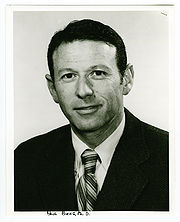 |
Paul Berg Paul Berg Paul Berg is an American biochemist and professor emeritus at Stanford University. He was the recipient of the Nobel Prize in Chemistry in 1980, along with Walter Gilbert and Frederick Sanger. The award recognized their contributions to basic research involving nucleic acids... |
United States | "for his fundamental studies of the biochemistry of nucleic acids, with particular regard to recombinant-DNA Recombinant DNA Recombinant DNA molecules are DNA sequences that result from the use of laboratory methods to bring together genetic material from multiple sources, creating sequences that would not otherwise be found in biological organisms... " |
 |
Walter Gilbert Walter Gilbert Walter Gilbert is an American physicist, biochemist, molecular biology pioneer, and Nobel laureate.-Biography:Gilbert was born in Boston, Massachusetts, on March 21, 1932... |
United States | "for their contributions concerning the determination of base sequences DNA sequencing DNA sequencing includes several methods and technologies that are used for determining the order of the nucleotide bases—adenine, guanine, cytosine, and thymine—in a molecule of DNA.... in nucleic acids" |
|
 |
Frederick Sanger Frederick Sanger Frederick Sanger, OM, CH, CBE, FRS is an English biochemist and a two-time Nobel laureate in chemistry, the only person to have been so. In 1958 he was awarded a Nobel prize in chemistry "for his work on the structure of proteins, especially that of insulin"... |
United Kingdom | ||
| 1981 | Kenichi Fukui Kenichi Fukui Kenichi Fukui was a Japanese chemist.Kenichi Fukui was co-recipient of the Nobel Prize in Chemistry in 1981 with Roald Hoffmann, for their independent investigations into the mechanisms of chemical reactions... |
Japan | "for their theories, developed independently, concerning the course of chemical reactions" | |
 |
Roald Hoffmann Roald Hoffmann Roald Hoffmann is an American theoretical chemist who won the 1981 Nobel Prize in Chemistry. He currently teaches at Cornell University in Ithaca, New York.-Escape from the Holocaust:... |
United States | ||
| 1982 | Aaron Klug Aaron Klug Sir Aaron Klug, OM, PRS is a Lithuanian-born British chemist and biophysicist, and winner of the 1982 Nobel Prize in Chemistry for his development of crystallographic electron microscopy and his structural elucidation of biologically important nucleic acid-protein complexes.-Biography:Klug was... |
United Kingdom | "for his development of crystallographic electron microscopy Electron crystallography Electron crystallography is a method to determine the arrangement of atoms in solids using a transmission electron microscope .- Comparison with X-ray crystallography :... and his structural elucidation of biologically important nucleic acid-protein complexes Chromatin Chromatin is the combination of DNA and proteins that make up the contents of the nucleus of a cell. The primary functions of chromatin are; to package DNA into a smaller volume to fit in the cell, to strengthen the DNA to allow mitosis and meiosis and prevent DNA damage, and to control gene... " |
|
| 1983 | Henry Taube Henry Taube Henry Taube, Ph.D, M.Sc, B.Sc, FRSC was a Canadian-born American chemist noted for having been awarded the 1983 Nobel Prize in Chemistry for "his work in the mechanisms of electron-transfer reactions, especially in metal complexes." He was the first Canadian-born chemist to win the Nobel Prize... |
United States | "for his work on the mechanisms of electron transfer reactions Inner sphere electron transfer Inner sphere or bonded electron transfer proceeds via a covalent linkage between the two redox partners, the oxidant and the reductant. In Inner Sphere electron transfer , a ligand bridges the two metal redox centers during the electron transfer event. Inner sphere reactions are inhibited by... , especially in metal complexes" |
|
| 1984 | Robert Bruce Merrifield Robert Bruce Merrifield Robert Bruce Merrifield was an American biochemist who won the Nobel Prize in Chemistry in 1984 for the invention of solid phase peptide synthesis.-Early life:... |
United States | "for his development of methodology for chemical synthesis on a solid matrix" | |
| 1985 | Herbert A. Hauptman Herbert A. Hauptman Herbert Aaron Hauptman was an American mathematician and Nobel laureate. He pioneered and developed a mathematical method that has changed the whole field of chemistry and opened a new era in research in determination of molecular structures of crystallized materials... |
United States | "for their outstanding achievements in developing direct methods for the determination of crystal structures" | |
| Jerome Karle Jerome Karle Jerome Karle, born Jerome Karfunkel is an American physical chemist. Jointly with Herbert A. Hauptman, he was awarded the Nobel Prize in Chemistry in 1985, for the direct analysis of crystal structures using X-ray scattering techniques.-Early life and education:Karle was born in New York City on... |
United States | |||
| 1986 | Dudley R. Herschbach Dudley R. Herschbach Dudley Robert Herschbach is an American chemist at Harvard University. He won the 1986 Nobel Prize in Chemistry jointly with Yuan T. Lee and John C... |
United States | "for their contributions concerning the dynamics of chemical elementary processes" | |
| Yuan T. Lee Yuan T. Lee Yuan Tseh Lee, Ph.D. is a chemist. He was the first Taiwanese Nobel Prize laureate, who, along with the Hungarian-Canadian John C. Polanyi and American Dudley R. Herschbach won the Nobel Prize in Chemistry in 1986 "for their contributions to the dynamics of chemical elementary processes"... |
United States | |||
| John C. Polanyi John Charles Polanyi John Charles Polanyi, PC, CC, FRSC, O.Ont, FRS, born January 23, 1929) is a Canadian chemist who won the 1986 Nobel Prize in Chemistry, for his research in chemical kinetics. Polanyi was educated at Manchester University, and did postdoctoral research at the National Research Council in Canada and... |
Canada / Hungary | |||
| 1987 | Donald J. Cram Donald J. Cram Donald James Cram was an American chemist who shared the 1987 Nobel Prize in Chemistry with Jean-Marie Lehn and Charles J... |
United States | "for their development and use of molecules with structure-specific interactions Host-guest chemistry In supramolecular chemistry, host-guest chemistry describes complexes that are composed of two or more molecules or ions that are held together in unique structural relationships by forces other than those of full covalent bonds. Host-guest chemistry encompasses the idea of molecular recognition... of high selectivity" |
|
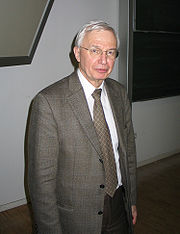 |
Jean-Marie Lehn Jean-Marie Lehn Jean-Marie Lehn is a French chemist. He received the Nobel Prize together with Donald Cram and Charles Pedersen in 1987 for his work in Chemistry, particularly his synthesis of the cryptands... |
France | ||
| Charles J. Pedersen Charles J. Pedersen Charles John Pedersen was an American organic chemist best known for describing methods of synthesizing crown ethers. He shared the Nobel Prize in Chemistry in 1987 with Donald J. Cram and Jean-Marie Lehn... |
United States | |||
| 1988 | Johann Deisenhofer Johann Deisenhofer Johann Deisenhofer is a German biochemist who, along with Hartmut Michel and Robert Huber, received the Nobel Prize for Chemistry in 1988 for their determination of the structure of a membrane-bound complex of proteins and co-factors that is essential to photosynthesis.Deisenhofer earned his... |
Federal Republic of Germany | "for their determination of the three-dimensional structure of a photosynthetic reaction centre" | |
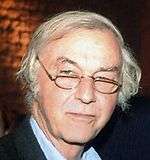 |
Robert Huber Robert Huber Robert Huber is a German biochemist and Nobel laureate.He was born 20 February 1937 in Munich where his father, Sebastian, was a bank cashier. He was educated at the Humanistisches Karls-Gymnasium from 1947 to 1956 and then studied chemistry at the Technische Hochschule, receiving his diploma in 1960... |
Federal Republic of Germany | ||
| Hartmut Michel Hartmut Michel Hartmut Michel is a German biochemist and Nobel Laureate.He was born 18 July 1948 in Ludwigsburg. After compulsory military service, he studied biochemistry at the University of Tübingen, working for his final year at Dieter Oesterhelt’s laboratory on ATPase activity of halobacteria.In 1986, he... |
Federal Republic of Germany | |||
| 1989 | Sidney Altman Sidney Altman Sidney Altman is a Canadian American molecular biologist, who is currently the Sterling Professor of Molecular, Cellular, and Developmental Biology and Chemistry at Yale University. In 1989 he shared the Nobel Prize in Chemistry with Thomas R... |
Canada United States |
"for their discovery of catalytic properties of RNA Ribozyme A ribozyme is an RNA molecule with a well defined tertiary structure that enables it to catalyze a chemical reaction. Ribozyme means ribonucleic acid enzyme. It may also be called an RNA enzyme or catalytic RNA. Many natural ribozymes catalyze either the hydrolysis of one of their own... " |
|
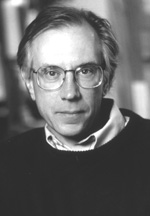 |
Thomas Cech Thomas Cech Thomas Robert Cech is a chemist who shared the 1989 Nobel prize in chemistry with Sidney Altman, for their discovery of the catalytic properties of RNA. Cech discovered that RNA could itself cut strands of RNA, which showed that life could have started as RNA... |
United States | ||
| 1990 | Elias James Corey Elias James Corey Elias James Corey is an American organic chemist. In 1990 he won the Nobel Prize in Chemistry "for his development of the theory and methodology of organic synthesis", specifically retrosynthetic analysis... |
United States | "for his development of the theory and methodology of organic synthesis Retrosynthetic analysis Retrosynthetic analysis is a technique for solving problems in the planning of organic syntheses. This is achieved by transforming a target molecule into simpler precursor structures without assumptions regarding starting materials. Each precursor material is examined using the same method. This... " |
|
| 1991 | Richard R. Ernst Richard R. Ernst Richard Robert Ernst is a Swiss physical chemist and Nobel Laureate.Born in Winterthur, Switzerland, Ernst was awarded the Nobel Prize in Chemistry in 1991 for his contributions towards the development of Fourier Transform nuclear magnetic resonance spectroscopy while at Varian Associates, Palo... |
Switzerland | "for his contributions to the development of the methodology of high resolution nuclear magnetic resonance (NMR) spectroscopy" | |
| 1992 | 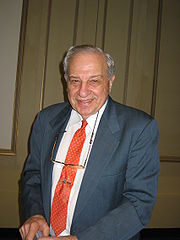 |
Rudolph A. Marcus Rudolph A. Marcus Rudolph "Rudy" Arthur Marcus is a Canadian-born chemist who received the 1992 Nobel Prize in Chemistry for his theory of electron transfer. Marcus theory, named after him, provides a thermodynamic and kinetic framework for describing one electron outer-sphere electron transfer.He was born in... |
United States | "for his contributions to the theory of electron transfer reactions Marcus Theory Marcus Theory is a theory originally developed by Rudolph A. Marcus, starting in 1956, to explain the rates of electron transfer reactions – the rate at which an electron can move or jump from one chemical species to another... in chemical systems" |
| 1993 | 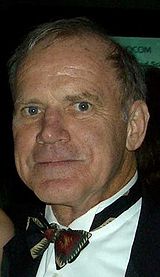 |
Kary B. Mullis Kary Mullis Kary Banks Mullis is a Nobel Prize winning American biochemist, author, and lecturer. In recognition of his improvement of the polymerase chain reaction technique, he shared the 1993 Nobel Prize in Chemistry with Michael Smith and earned the Japan Prize in the same year. The process was first... |
United States | "for contributions to the developments of methods within DNA-based chemistry [...] for his invention of the polymerase chain reaction Polymerase chain reaction The polymerase chain reaction is a scientific technique in molecular biology to amplify a single or a few copies of a piece of DNA across several orders of magnitude, generating thousands to millions of copies of a particular DNA sequence.... (PCR) method" |
| Michael Smith Michael Smith (chemist) Michael Smith, CC, OBC, FRS was a British-born Canadian biochemist who won the 1993 Nobel Prize for Chemistry.-Biography:... |
Canada | "for contributions to the developments of methods within DNA-based chemistry [...] for his fundamental contributions to the establishment of oligonucleotide-based, site-directed mutagenesis Site-directed mutagenesis Site-directed mutagenesis, also called site-specific mutagenesis or oligonucleotide-directed mutagenesis, is a molecular biology technique in which a mutation is created at a defined site in a DNA molecule. In general, this form of mutagenesis requires that the wild type gene sequence be known... and its development for protein studies" |
||
| 1994 | George A. Olah George Andrew Olah George Andrew Olah is an American chemist. His research involves the generation and reactivity of carbocations via superacids. For this research, Olah was awarded a Nobel Prize in Chemistry in 1994... |
United States / Hungary | "for his contribution to carbocation Carbocation A carbocation is an ion with a positively-charged carbon atom. The charged carbon atom in a carbocation is a "sextet", i.e. it has only six electrons in its outer valence shell instead of the eight valence electrons that ensures maximum stability . Therefore carbocations are often reactive,... chemistry" |
|
| 1995 | Paul J. Crutzen Paul J. Crutzen Paul Jozef Crutzen is a Dutch Nobel prize winning atmospheric chemist.Crutzen is best known for his research on ozone depletion. He lists his main research interests as “Stratospheric and tropospheric chemistry, and their role in the biogeochemical cycles and climate”... |
the Netherlands | "for their work in atmospheric chemistry, particularly concerning the formation and decomposition of ozone Ozone depletion Ozone depletion describes two distinct but related phenomena observed since the late 1970s: a steady decline of about 4% per decade in the total volume of ozone in Earth's stratosphere , and a much larger springtime decrease in stratospheric ozone over Earth's polar regions. The latter phenomenon... " |
|
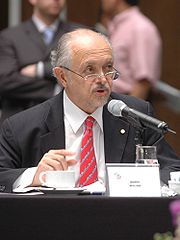 |
Mario J. Molina Mario J. Molina Mario José Molina-Pasquel Henríquez is a Mexican chemist and one of the most prominent precursors to the discovering of the Antarctic ozone hole. He was a co-recipient Mario José Molina-Pasquel Henríquez (born March 19, 1943 in Mexico City) is a Mexican chemist and one of the most prominent... |
(México)United States | ||
 |
F. Sherwood Rowland Frank Sherwood Rowland Frank Sherwood Rowland is an American Nobel laureate and a professor of chemistry at the University of California, Irvine. His research is in atmospheric chemistry and chemical kinetics.... |
United States | ||
| 1996 | Robert F. Curl Jr. Robert Curl Robert Floyd Curl, Jr. the son of a Methodist Minister is a graduate of Thomas Jefferson High School in San Antonio, Texas and is an emeritus professor of chemistry at Rice University.... |
United States | "for their discovery of fullerenes" | |
 |
Sir Harold W. Kroto Harold Kroto Sir Harold Walter Kroto, FRS , born Harold Walter Krotoschiner, is a British chemist and one of the three recipients to share the 1996 Nobel Prize in Chemistry with Robert Curl and Richard Smalley.... |
United Kingdom | ||
| Richard E. Smalley Richard Smalley Richard Errett Smalley was the Gene and Norman Hackerman Professor of Chemistry and a Professor of Physics and Astronomy at Rice University, in Houston, Texas... |
United States | |||
| 1997 | Paul D. Boyer Paul D. Boyer - External links :* , from the Office of Scientific and Technical Information, United States Department of Energy* * *... |
United States | "for their elucidation of the enzymatic mechanism ATP synthase right|thumb|300px|Molecular model of ATP synthase by X-ray diffraction methodATP synthase is an important enzyme that provides energy for the cell to use through the synthesis of adenosine triphosphate . ATP is the most commonly used "energy currency" of cells from most organisms... underlying the synthesis of adenosine triphosphate (ATP)" |
|
| John E. Walker John E. Walker Professor Sir John Ernest Walker is an English chemist who won the Nobel Prize in Chemistry in 1997. He is currently the director of the MRC Mitochondrial Biology Unit in Cambridge, and a Fellow of Sidney Sussex College.He was born in Halifax, Yorkshire, the son of Thomas Ernest Walker, a... |
United Kingdom | |||
| Jens C. Skou Jens Christian Skou Jens Christian Skou is a Danish chemist and Nobel laureate.Skou was born in Lemvig, Denmark to a wealthy family. His father Magnus Martinus Skou was a timber and coal merchant. His mother Ane-Margrethe Skou took over the company after the death of his father. At the age of 15 Skou entered a... |
Denmark | "for the first discovery of an ion-transporting enzyme, Na+, K+ -ATPase Na+/K+-ATPase Na+/K+-ATPase is an enzyme located in the plasma membrane in all animals.- Sodium-potassium pumps :Active transport is responsible for cells containing relatively high... " |
||
| 1998 |  |
Walter Kohn Walter Kohn Walter Kohn is an Austrian-born American theoretical physicist.He was awarded, with John Pople, the Nobel Prize in chemistry in 1998. The award recognized their contributions to the understandings of the electronic properties of materials... |
United States | "for his development of the density-functional theory Density functional theory Density functional theory is a quantum mechanical modelling method used in physics and chemistry to investigate the electronic structure of many-body systems, in particular atoms, molecules, and the condensed phases. With this theory, the properties of a many-electron system can be determined by... " |
| John A. Pople John Pople Sir John Anthony Pople, KBE, FRS, was a Nobel-Prize winning theoretical chemist. Born in Burnham-on-Sea, Somerset, England, he attended Bristol Grammar School. He won a scholarship to Trinity College, Cambridge in 1943. He received his B. A. in 1946. Between 1945 and 1947 he worked at the Bristol... |
United Kingdom | "for his development of computational methods GAUSSIAN Gaussian is a computational chemistry software program initially released in 1970 by John Pople and his research group at Carnegie-Mellon University as Gaussian 70. It has been continuously updated since then... in quantum chemistry" |
||
| 1999 | Ahmed Zewail Ahmed Zewail Ahmed Hassan Zewail is an Egyptian-American scientist who won the 1999 Nobel Prize in Chemistry for his work on femtochemistry. He is the Linus Pauling Chair Professor Chemistry and Professor of Physics at the California Institute of Technology.- Birth and education :Ahmed Zewail was born on... |
Egypt Egypt Egypt , officially the Arab Republic of Egypt, Arabic: , is a country mainly in North Africa, with the Sinai Peninsula forming a land bridge in Southwest Asia. Egypt is thus a transcontinental country, and a major power in Africa, the Mediterranean Basin, the Middle East and the Muslim world... United States |
"for his studies of the transition states of chemical reactions using femtosecond spectroscopy" | |
| 2000 | Alan J. Heeger Alan J. Heeger Alan Jay Heeger is an American physicist, academic and Nobel Prize laureate in chemistry.Heeger was born in Sioux City, Iowa to a Jewish family. He earned a B.S. in physics and mathematics from the University of Nebraska-Lincoln in 1957, and a Ph.D in physics from the University of California,... |
United States | "for their discovery and development of conductive polymer Conductive polymer Conductive polymers or, more precisely, intrinsically conducting polymers are organic polymers that conduct electricity. Such compounds may have metallic conductivity or can be semiconductors. The biggest advantage of conductive polymers is their processability, mainly by dispersion. Conductive... s" |
|
| Alan G MacDiarmid Alan MacDiarmid Alan Graham MacDiarmid ONZ was a chemist, and one of three recipients of the Nobel Prize for Chemistry in 2000.-Early life:He was born in Masterton, New Zealand as one of five children - three brothers and two sisters... |
United States New Zealand |
|||
| Hideki Shirakawa Hideki Shirakawa Hideki Shirakawa is a Japanese chemist and winner of the 2000 Nobel Prize in Chemistry for his discovery of conductive polymers together with physics professor Alan J. Heeger and chemistry professor Alan G... |
Japan | |||
| 2001 | William S. Knowles William Standish Knowles William S. Knowles is an American chemist. He was born in Taunton, Massachusetts. Knowles was one of the recipients of the 2001 Nobel Prize in Chemistry. He shared half the prize with Ryōji Noyori for their work in asymmetric synthesis, specifically for his work in hydrogenation reactions. The... |
United States | "for their work on chirally catalysed hydrogenation reactions" | |
 |
Ryōji Noyori Ryoji Noyori is a Japanese chemist. He won the Nobel Prize in Chemistry in 2001. Noyori shared half of the prize with William S. Knowles for the study of chirally catalyzed hydrogenations; the second half of the Prize went to K. Barry Sharpless for his study in chirally catalyzed oxidation reactions... |
Japan | ||
| K. Barry Sharpless | United States | "for his work on chirally catalysed oxidation reactions Sharpless asymmetric dihydroxylation Sharpless asymmetric dihydroxylation is the chemical reaction of an alkene with osmium tetroxide in the presence of a chiral quinine ligand to form a vicinal diol.... " |
||
| 2002 |  |
John B. Fenn | United States | "for the development of methods for identification and structure analyses of biological macromolecules [...] for their development of soft desorption Soft laser desorption Soft laser desorption is laser desorption of large molecules that results in ionization without fragmentation. "Soft" in the context of ion formation means forming ions without breaking chemical bonds... ionisation methods Electrospray ionization Electrospray ionization is a technique used in mass spectrometry to produce ions. It is especially useful in producing ions from macromolecules because it overcomes the propensity of these molecules to fragment when ionized... for mass spectrometric analyses of biological macromolecules" |
| Koichi Tanaka Koichi Tanaka is a Japanese scientist who shared the Nobel Prize in Chemistry in 2002 for developing a novel method for mass spectrometric analyses of biological macromolecules with John Bennett Fenn and Kurt Wuthrich .... |
Japan | |||
 |
Kurt Wüthrich Kurt Wüthrich Kurt Wüthrich is a Swiss chemist and Nobel Chemistry laureate.-Biography:Born in Aarberg, Switzerland, Wüthrich was educated in chemistry, physics, and mathematics at the University of Berne before pursuing his Ph.D. under the direction of Silvio Fallab at the University of Basel, awarded in 1964... |
Switzerland | "for the development of methods for identification and structure analyses of biological macromolecules [...] for his development of nuclear magnetic resonance spectroscopy for determining the three-dimensional structure of biological macromolecules in solution Protein nuclear magnetic resonance spectroscopy Nuclear magnetic resonance spectroscopy of proteins is a field of structural biology in which NMR spectroscopy is used to obtain information about the structure and dynamics of proteins. The field was pioneered by Richard R. Ernst and Kurt Wüthrich, among others... " |
|
| 2003 | Peter Agre Peter Agre Peter Agre is an American medical doctor, professor, and molecular biologist who was awarded the 2003 Nobel Prize in Chemistry for his discovery of aquaporins. Aquaporins are water-channel proteins that move water molecules through the cell membrane... |
United States | "for discoveries concerning channels in cell membranes [...] for the discovery of water channels Aquaporin Aquaporins are proteins embedded in the cell membrane that regulate the flow of water.Aquaporins are integral membrane proteins from a larger family of major intrinsic proteins that form pores in the membrane of biological cells.... " |
|
 |
Roderick MacKinnon Roderick MacKinnon Roderick MacKinnon is a professor of Molecular Neurobiology and Biophysics at Rockefeller University who won the Nobel Prize in Chemistry together with Peter Agre in 2003 for his work on the structure and operation of ion channels.... |
United States | "for discoveries concerning channels in cell membranes [...] for structural and mechanistic studies of ion channels" | |
| 2004 |  |
Aaron Ciechanover Aaron Ciechanover Aaron Ciechanover is an Israeli biologist, and Nobel laureate in Chemistry.- Biography :Ciechanover was born in Haifa, British mandate of Palestine, a year before the establishment of the State of Israel... |
Israel Israel The State of Israel is a parliamentary republic located in the Middle East, along the eastern shore of the Mediterranean Sea... |
"for the discovery of ubiquitin-mediated protein degradation" |
 |
Avram Hershko Avram Hershko Avram Hershko is a Hungarian-Israeli biochemist and Nobel laureate in Chemistry.-Biography:Born Herskó Ferenc in Karcag, Hungary, Hershko emigrated to Israel in 1950. Received his M.D. in 1965 and his Ph.D in 1969 from the Hebrew University-Hadassah Medical School, Jerusalem, Israel... |
Israel | ||
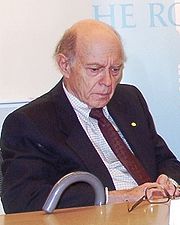 |
Irwin Rose Irwin Rose Irwin A. Rose is an American biologist. Along with Aaron Ciechanover and Avram Hershko, he was awarded the 2004 Nobel Prize in Chemistry for the discovery of ubiquitin-mediated protein degradation.-Biography:... |
United States | ||
| 2005 | Yves Chauvin Yves Chauvin Yves Chauvin is a French chemist and Nobel Prize laureate. He is honorary research director at the Institut français du pétrole and a member of the French Academy of Science. Chauvin received his degree from the Lyon School of Chemistry, Physics and Electronics in 1954.He was awarded the 2005... |
France | "for the development of the metathesis Olefin metathesis Olefin metathesis or transalkylidenation is an organic reaction that entails redistribution of alkylene fragments by the scission of carbon - carbon double bonds in olefins . Its advantages include the creation of fewer sideproducts and hazardous wastes. Yves Chauvin, Robert H. Grubbs, and Richard R... method in organic synthesis" |
|
 |
Robert H. Grubbs Robert H. Grubbs Robert Howard Grubbs is an American chemist and Nobel laureate.As he noted in his official Nobel Prize autobiography, "In some places, my birthplace is listed as Calvert City and in others Possum Trot [NB: both in Marshall County]... |
United States | ||
| Richard R. Schrock Richard R. Schrock Richard Royce Schrock is an American chemist and Nobel laureate recognized for his contributions to the metathesis reaction used in organic chemistry.-Biography:... |
United States | |||
| 2006 | 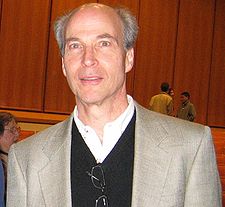 |
Roger D. Kornberg Roger D. Kornberg Roger David Kornberg is an American biochemist and professor of structural biology at Stanford University School of Medicine.Kornberg was awarded the Nobel Prize in Chemistry in 2006 for his studies of the process by which genetic information from DNA is copied to RNA, "the molecular basis of... |
United States | "for his studies of the molecular basis of eukaryotic transcription Transcription (genetics) Transcription is the process of creating a complementary RNA copy of a sequence of DNA. Both RNA and DNA are nucleic acids, which use base pairs of nucleotides as a complementary language that can be converted back and forth from DNA to RNA by the action of the correct enzymes... " |
| 2007 | 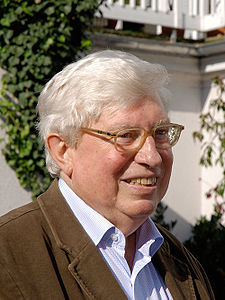 |
Gerhard Ertl Gerhard Ertl Gerhard Ertl is a German physicist and a Professor emeritus at the Department of Physical Chemistry, Fritz-Haber-Institut der Max-Planck-Gesellschaft in Berlin, Germany... |
Germany | "for his studies of chemical processes on solid surfaces" |
| 2008 |  |
Osamu Shimomura Osamu Shimomura is a Japanese organic chemist and marine biologist, and Professor Emeritus at Marine Biological Laboratory in Woods Hole, Massachusetts and Boston University Medical School... |
Japan | "for the discovery and development of the green fluorescent protein Green fluorescent protein The green fluorescent protein is a protein composed of 238 amino acid residues that exhibits bright green fluorescence when exposed to blue light. Although many other marine organisms have similar green fluorescent proteins, GFP traditionally refers to the protein first isolated from the... , GFP" |
 |
Martin Chalfie Martin Chalfie Martin Chalfie is an American scientist. He is the William R. Kenan, Jr. Professor of Biological Sciences at Columbia University, where he is also chair of the department of biological sciences. He shared the 2008 Nobel Prize in Chemistry along with Osamu Shimomura and Roger Y. Tsien "for the... |
United States | ||
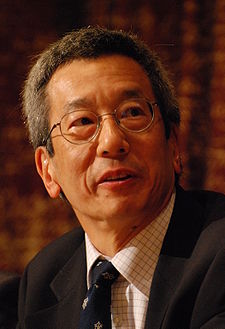 |
Roger Y. Tsien Roger Y. Tsien Roger Yonchien Tsien is a Chinese American biochemist and a professor at the Department of Chemistry and Biochemistry, University of California, San Diego... |
United States | ||
| 2009 | Venkatraman Ramakrishnan | United States | "for studies of the structure and function of the ribosome Ribosome A ribosome is a component of cells that assembles the twenty specific amino acid molecules to form the particular protein molecule determined by the nucleotide sequence of an RNA molecule.... " |
|
| Thomas A. Steitz Thomas A. Steitz -Publications:* Steitz, T. A., et al. , nsls newsletter, .* Steitz, T. A., et al. , NSLS Activity Report .-External links:* , from the Office of Scientific and Technical Information, United States Department of Energy... |
United States | |||
| Ada E. Yonath Ada Yonath Ada E. Yonath is an Israeli crystallographer best known for her pioneering work on the structure of the ribosome. She is the current director of the Helen and Milton A. Kimmelman Center for Biomolecular Structure and Assembly of the Weizmann Institute of Science. In 2009, she received the Nobel... |
Israel | |||
| 2010 | Richard F. Heck Richard F. Heck Richard Fred Heck is an American chemist noted for the discovery and development of the Heck reaction, which uses palladium to catalyze organic chemical reactions that couple aryl halides with alkenes.... |
United States | "for palladium-catalyzed cross couplings in organic synthesis" | |
| Ei-ichi Negishi Ei-ichi Negishi is a Japanese chemist who has spent most of his career at Purdue University, United States. He is best known for his discovery of the Negishi coupling. He was awarded the 2010 Nobel Prize in Chemistry "for palladium catalyzed cross couplings in organic synthesis" jointly with Richard F. Heck and... |
United States | |||
| Akira Suzuki Akira Suzuki (chemist) is a Japanese chemist and Nobel Prize Laureate , who first published the Suzuki reaction, the organic reaction of an aryl- or vinyl-boronic acid with an aryl- or vinyl-halide catalyzed by a palladium complex, in 1979.-Life:... |
Japan | |||
| 2011 | Dan Shechtman Dan Shechtman Dan Shechtman is the Philip Tobias Professor of Materials Science at the Technion – Israel Institute of Technology, an Associate of the US Department of Energy's Ames Laboratory, and Professor of Materials Science at Iowa State University. On April 8, 1982, while on sabbatical at the U.S... |
Israel | "for the discovery of quasicrystals Quasicrystal A quasiperiodic crystal, or, in short, quasicrystal, is a structure that is ordered but not periodic. A quasicrystalline pattern can continuously fill all available space, but it lacks translational symmetry... " |
|

